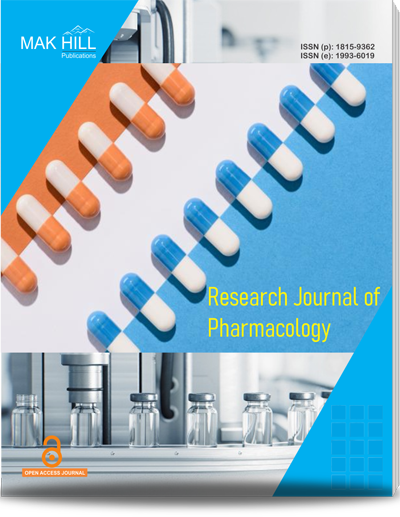
Research Journal of Pharmacology
ISSN: Online 1993-6019ISSN: Print 1815-9362
Abstract
The study aimed at determining the effects of the stem bark extracts of Garcinia parvifolia administered orally to P. berghei infected mice in varied dosages to observe Malondialdehyde (MDA) level, SGOT and SGPT and its relationship with liver cell damage and degree of parasitemia. Thirty mice of Swiss strain used in the experiment were assigned into 5 treatment groups: Group 1 (control group) consisted of P. bergheii infected mice reacted with physiological salt solution; group 2 (normal) consisted of uninfected mice; group 3 consisted infected mice treated with stem bark extracts of G. parvifolia with a dosage of 200 mg/kg BW/day; group 4 consisted of infected mice treated with stem bark extracts of G. parvifolia with a dosage of 400 mg/kg BW/day and group 5 consisted of infected mice treated with stem bark extracts of G. parvifolia with a dosage of 800 mg/kg BW/day. The test preparation was administered orally for 4 days. After 4 days of administration, MDA level was measured in the plasma using a spectrophotometer and three mice were killed to obtain the liver for histopathological purpose. The study found 400 mg kg–1 BW that during malaria infection, MDA production increased and liver damage tended to be milder. Administration of stem bark extract of G. parvifolia in oral way could reduce MDA, SGOT and SGPT level (p<0.05), particularly with a dosage of 400 mg and 800 mg/kg BW/day.
How to cite this article:
Syamsudin . The Effects of Garcinia parvifolia (Miq) Miq Extracts Against Liver Damage of Plasmodium berghei Infected Mice.
DOI: https://doi.org/10.36478/rjpharm.2011.95.98
URL: https://www.makhillpublications.co/view-article/1815-9362/rjpharm.2011.95.98